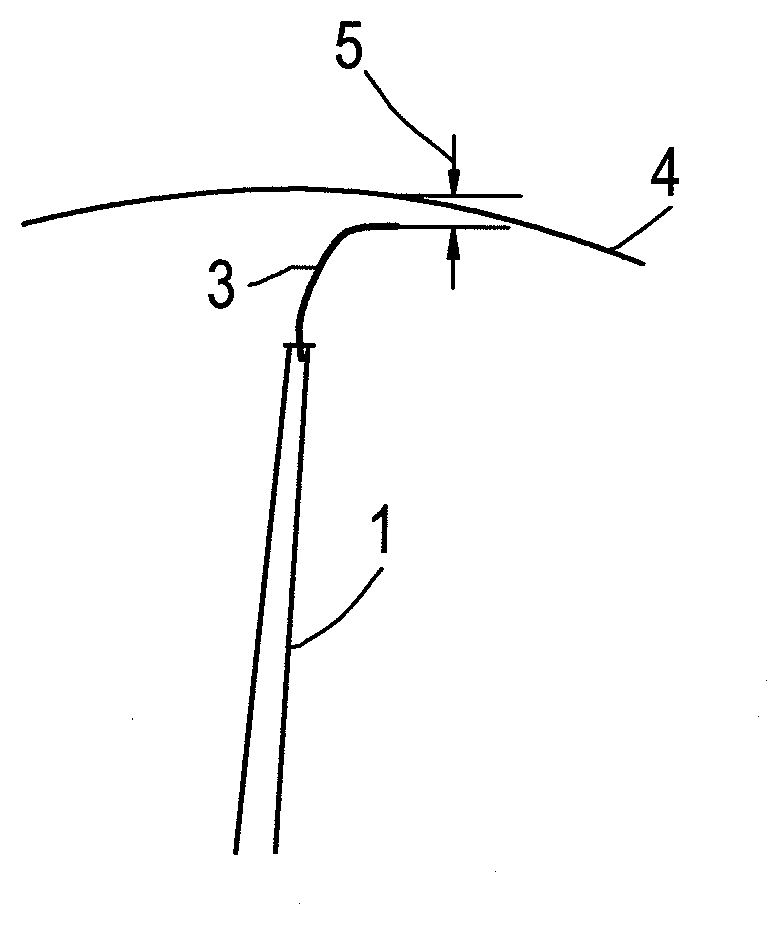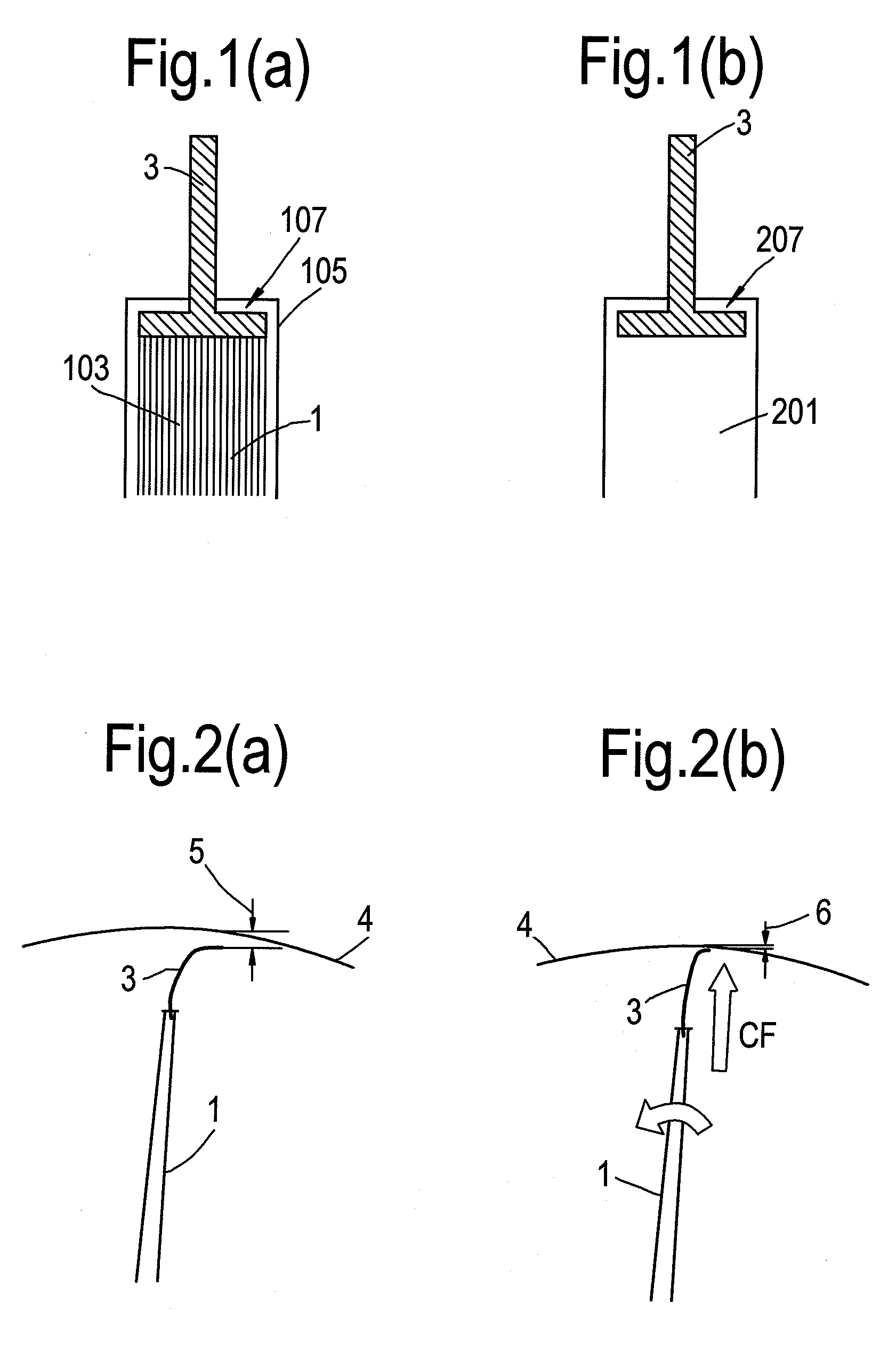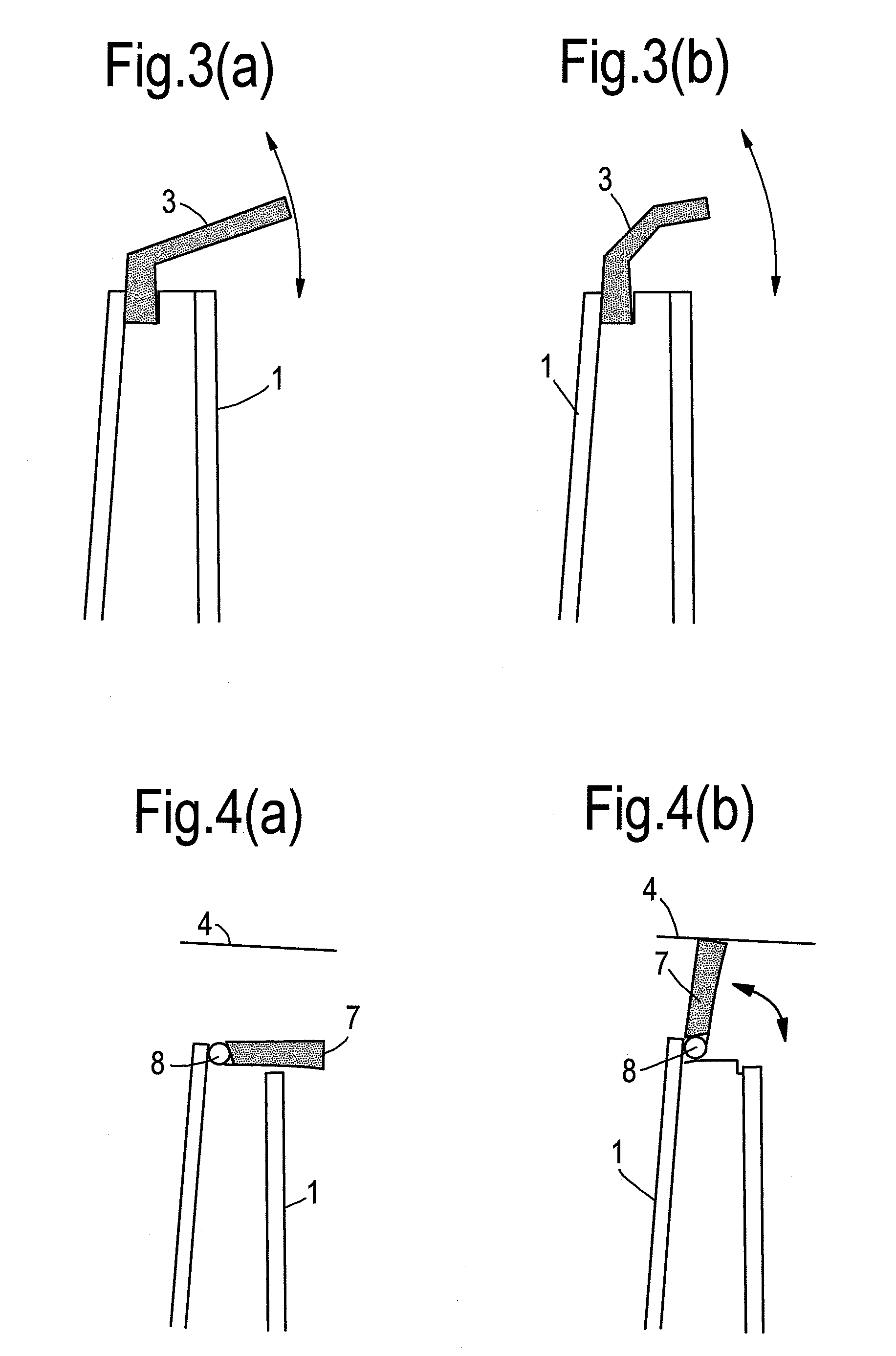Fan blade
a technology of fan blades and blades, applied in the direction of machines/engines, mechanical equipment, liquid fuel engines, etc., can solve the problems of blade damage, blade efficiency drop at cruise, and increase in efficiency at cruise, so as to reduce engine noise
- Summary
- Abstract
- Description
- Claims
- Application Information
AI Technical Summary
Benefits of technology
Problems solved by technology
Method used
Image
Examples
Embodiment Construction
[0024]FIG. 1 shows schematically the tip of a fan blade 1. Slotted into a keyway 2 which runs along the radially outer edge of the blade is a strip sealing element 3 formed of a flexible material, such as plastic, rubber (e.g. silicone rubber) or coated metal foil. The sealing element can be removably replaceable when worn or damaged.
[0025]The keyway 2 can be formed in the body of a composite or a metallic blade, or can be formed by a separate part, e.g. facing side plates, attached to the tip of such a blade.
[0026]FIGS. 2(a) and (b) show schematically the operation of the sealing element 3. In
[0027]FIG. 2(a), the engine is stationary. Sealing element 3 has a curved cross-section profile, and there is a relatively large cold build clearance 5 between the radially outer edge of the sealing member 3 and the fan case 4. In FIG. 2(b), the blade is now rotating in the direction indicated by the curved arrow. A centrifugal force (CF) straightens out the profile of the sealing element so t...
PUM
 Login to View More
Login to View More Abstract
Description
Claims
Application Information
 Login to View More
Login to View More - R&D
- Intellectual Property
- Life Sciences
- Materials
- Tech Scout
- Unparalleled Data Quality
- Higher Quality Content
- 60% Fewer Hallucinations
Browse by: Latest US Patents, China's latest patents, Technical Efficacy Thesaurus, Application Domain, Technology Topic, Popular Technical Reports.
© 2025 PatSnap. All rights reserved.Legal|Privacy policy|Modern Slavery Act Transparency Statement|Sitemap|About US| Contact US: help@patsnap.com



